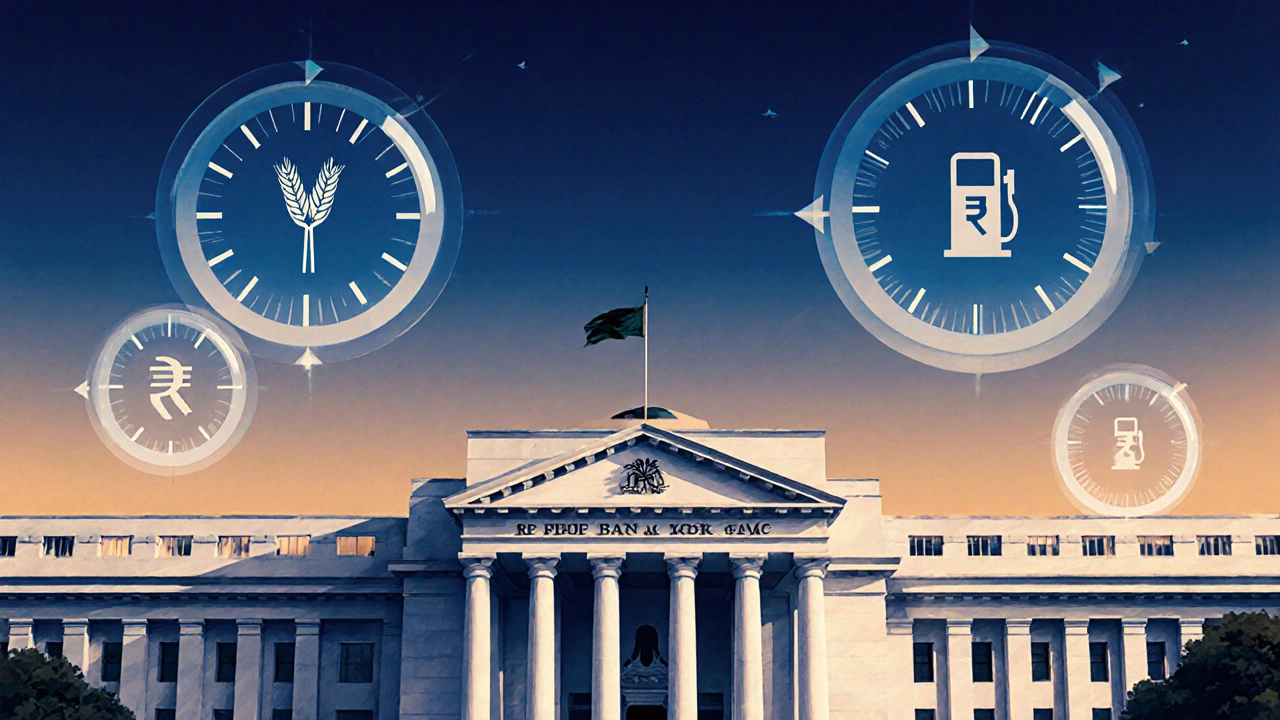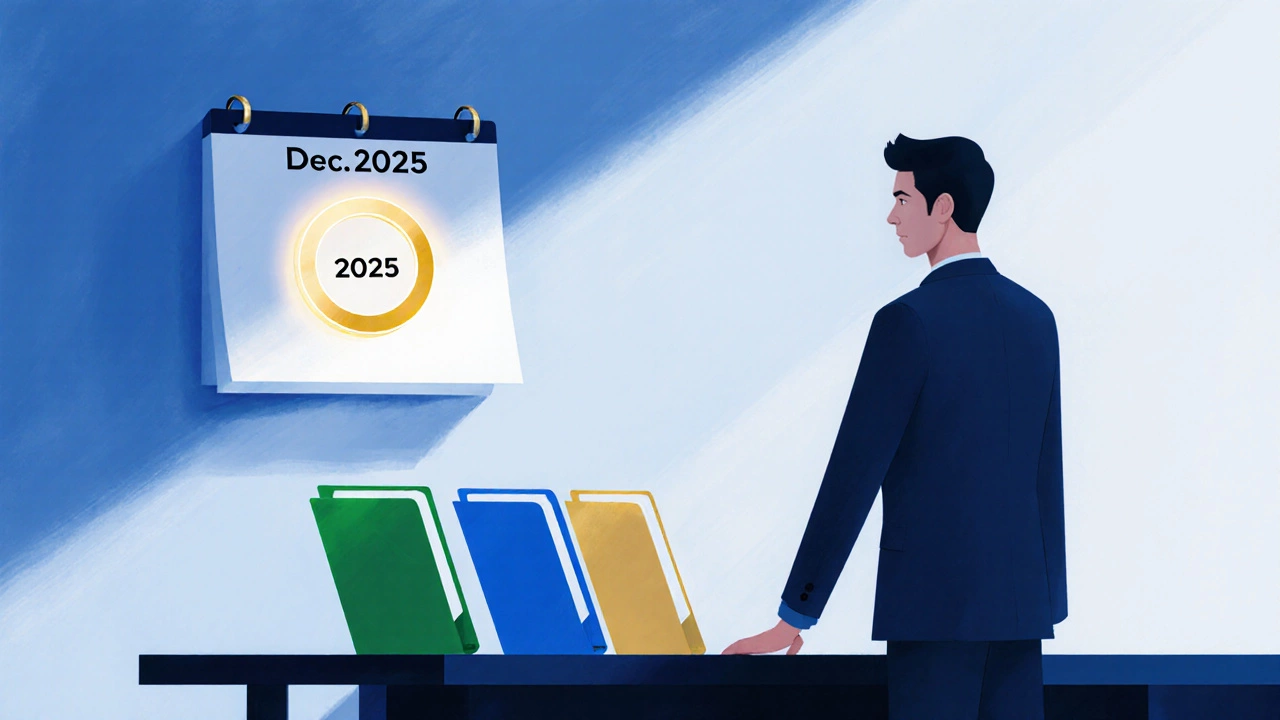When people ask “Are interest rates going to go down?”, they’re really wondering about the interest rates that affect everything from mortgages to personal loan rates in India. Understanding where rates are headed helps you decide whether to lock in a loan now, renegotiate an existing one, or wait for a better deal.
Key Takeaways
- RBI’s policy stance, inflation trends, and fiscal health drive short‑term rate movements.
- Between 2023 and early 2025 the repo rate has stayed at 6.5% after a 150‑basis‑point hike.
- Personal loan APRs are currently 10‑12% for borrowers with good credit; a modest rate cut could shave 0.5‑1% off that number.
- Watch the RBI’s next monetary policy meeting (mid‑December 2025) for the first clear signal of a down‑turn.
- Even if rates fall, banks may tighten underwriting, so a strong credit score remains crucial.
How the RBI Sets the Benchmark
The Reserve Bank of India (RBI) controls the policy rate known as the repo rate - the rate at which banks borrow short‑term funds from the central bank. When the RBI cuts the repo rate, commercial banks usually follow by lowering the interest they charge on new personal loans. Conversely, a hike pushes loan rates up.
Since March 2023, the RBI has been in a tightening cycle, raising the repo rate from 4.0% to a peak of 6.5% by August 2024. The goal was to curb inflation that surged above 7% in early 2023. By late 2024, inflation fell to 4.9% and the RBI signalled a possible pause.
Inflation - The Real Price‑Tag Driver
Inflation measures how fast prices for goods and services rise. High inflation erodes purchasing power, prompting central banks to raise rates. In India, the consumer price index (CPI) hit 7.8% YoY in June 2023, driven by food and fuel.
From mid‑2023 onward, supply‑chain bottlenecks eased and global oil prices retreated, pulling CPI down to 4.9% by September 2024. The RBI’s inflation target band is 2‑6%; staying within that range allows the central bank to consider a rate cut.
Fiscal Deficit and Bond Yields: Why They Matter
The fiscal deficit - the gap between government spending and revenue - influences long‑term bond yields. A widening deficit forces the government to issue more bonds, pushing yields higher. Higher yields lift the cost of borrowing across the economy, including personal loans.
India’s fiscal deficit narrowed from 7.5% of GDP in FY2022‑23 to 5.8% in FY2024‑25, thanks to better tax compliance and reduced subsidies. As bond yields slipped from 7.2% in early 2024 to 6.3% by October 2025, banks have a little more wiggle room to lower loan rates without hurting margins.

Economic Growth Signals
GDP growth acts as a barometer of credit demand. Strong growth usually means higher loan demand, giving banks pricing power. When growth slows, competition intensifies and rates may dip.
India’s real GDP expanded at 6.8% YoY in FY2024, but surveys in early 2025 show a slowdown to about 5.5% as global trade tensions linger. Slower growth could prompt banks to offer more attractive personal loan rates to keep their pipelines full.
What Lenders Are Doing Right Now
Major banks such as HDFC, ICICI, and Axis have kept personal loan APRs between 10% and 12% for borrowers with a credit score above 750. Some non‑bank lenders are offering as low as 9.5% for ultra‑prime customers to win market share.
Even with a potential rate cut, banks are likely to tighten credit underwriting - higher income verification, stricter debt‑to‑income ratios - to offset the lower margin. Therefore, a borrower’s credit profile will still dictate the final rate.
Short‑Term Outlook: Will Rates Drop in 2025?
Based on the three‑month forward guidance from the RBI’s Monetary Policy Committee (MPC), there is a 60% probability of a 25‑basis‑point cut in the December 2025 meeting, followed by another modest cut in the March 2026 meeting.
Key triggers for a cut include:
- Core inflation consistently under 4% for two consecutive quarters.
- Fiscal deficit below 5% of GDP, reducing pressure on bond yields.
- GDP growth staying above 5% YoY, keeping credit demand healthy.
If any of these conditions falter - for example, a spike in global commodity prices - the RBI may hold rates steady or even hike again.

Practical Checklist for Borrowers
- Check your credit score. A score above 750 gets you the best APR.
- Compare offers from at least three lenders before signing.
- Lock in a fixed‑rate loan if you expect rates to rise.
- Consider a variable‑rate loan only if you’re comfortable with a possible increase.
- Keep an eye on RBI’s policy announcements - they’re usually released a day before the meeting.
Comparison of Recent Personal Loan APRs (2023‑2025)
| Bank | 2023 Avg APR | 2024 Avg APR | 2025 Avg APR (Oct) |
|---|---|---|---|
| HDFC Bank | 11.2% | 11.5% | 11.0% |
| ICICI Bank | 10.9% | 11.2% | 10.8% |
| Axis Bank | 11.5% | 11.7% | 11.1% |
| Non‑Bank Lender (NBFC) | 12.3% | 12.0% | 11.6% |
Frequently Asked Questions
Will a drop in the RBI repo rate automatically lower my personal loan rate?
Not instantly. Banks usually take a few weeks to translate a repo‑rate cut into lower lending rates. They also consider competition, their own cost of funds, and your credit profile.
How much can I save if rates drop by 0.5%?
On a ₹5 lakh personal loan for three years, a 0.5% APR reduction saves roughly ₹7,800 in total interest.
Should I refinance my loan now or wait?
If your current APR is above 11.5% and you have a strong credit score, refinancing now can lock in lower rates before any possible banking tightening. If you’re at 9.5%‑10%, waiting for a potential cut makes sense.
What other economic signals should I watch?
Track core inflation, fiscal deficit trends, and bond‑yield movements. A steady drop in bond yields usually precedes lower loan rates.
Can I negotiate a better rate even if rates stay the same?
Yes. Banks often reward borrowers with high credit scores, low debt‑to‑income ratios, or a solid repayment history with a few basis‑point discount.
Bottom line: a modest decline in interest rates is plausible by the end of 2025, but it depends on inflation staying low, the fiscal deficit shrinking, and the RBI feeling comfortable easing policy. Stay proactive - keep your credit fit, compare offers, and time your application around RBI announcements to get the best personal loan rate possible.
